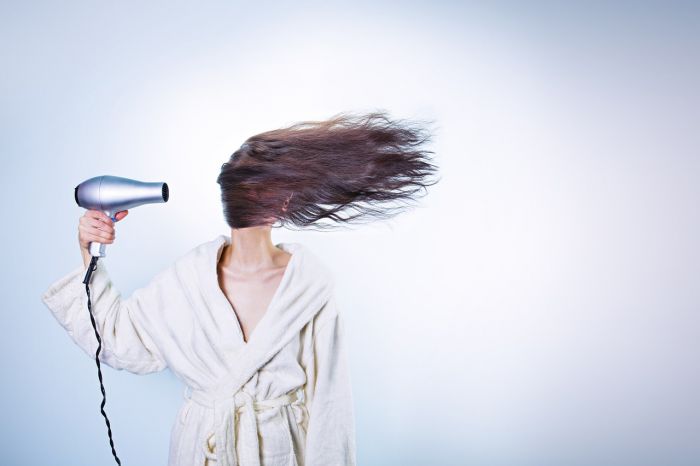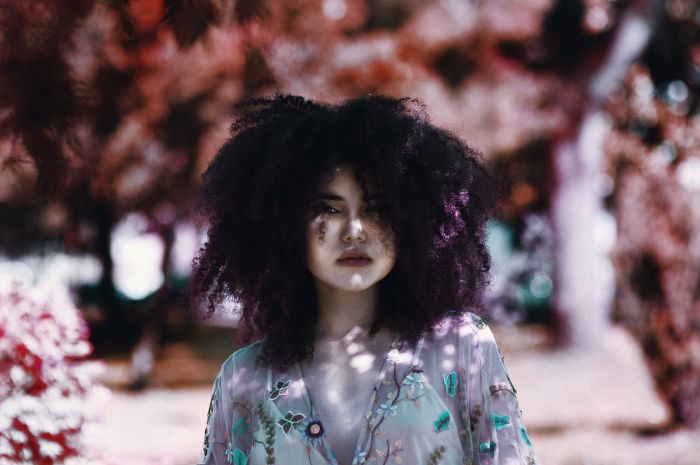
Almost any natural hair care forum or natuarlista’s YouTube tutorial will reference the hair typing system; but with all the numbers, letters, and misinformation it can be really hard to decipher what your hair type is and what is the best way to treat your locks.
Some women treat the hair typing system a little bit like an exclusive club. Ironically, a movement that started with self-love has been infiltrated by hair hate. Unfortunately, the corporate whitewashing in media seems to have crept into our self-loving safe spaces and pinned us against each other.

Curly Hair Hierarchy
It would seem as if women who were blessed with looser, silkier curl patterns inevitably rose to the top of the food chain, and the natural women with kinky frizzy tresses sunk to the bottom. All of this seems a silly right? I mean it is just hair after all, right?!
Wrong!
No matter how many times India Arie reminded us in the early 90s that we are not our hair, women of color continue to take pride in their hair and personally identify with their locks. The way I see, whether you have romantic beach waves or wild and sexy kinks the most important part of your natural hair journey is building a healthy hair care journey!
Understanding your curly hair type could be the key to finding out what works best for you and your tresses. So, if you are struggling to figure out what exactly the hair typing system is and where you may fit in hang on tight for a quick overview on hair typing.

Hair Typing: The Basics
Who even invented the hair typing system? None other than Oprah Winfrey’s accomplished stylist, Mr. Andre Walker. While Walker has claimed to champion all hair types he has definitely received some flack in the past for making statements like
“I always recommend embracing your natural texture. Kinky hair can have limited styling options; that’s the only hair type that I suggest altering with professional relaxing.” - Andre Walker
Love him or hate him, we owe the creation of the modern curly hair typing system to Walker.
The hair typing system is broken down into 4 basics types, and 3 subcategories that cover a broad spectrum of strand patterns.
I’ll be using photos from Sassina, the premiere online human hair store for references! If you like what you see, stop by their website and stock up on the latest hair trends before they’re gone at Sassina Hair.

Type 1: Straight Hair
Type 1 is the category for ladies with naturally straight locks.
Sub Categories
Type 1 A: The strands are very fine and then thin. Your hair feels soft and is also shiny.
Type 1 B: The strands are slightly textured. Overall the hair has a little bit more body than Type 1 A.
Type 1 C: The strands are the coarsest and thickest of all of the three Type 1 strands.
Your scalp naturally produces oil (sebum) as a way of keeping hair healthy and hydrated. The more straight your strands are the easier it is for the sebum to travel all the way to the tips of your hair. This is why Type 1 hair tends to be shinier, but more susceptible to greasy build up.
Even though Type 1 hair is not particularly voluminous, it is pretty resilient to styling tools and hair care products. This actually makes it pretty difficult to curling and heat styling.
Type 2: Wavy
Type 2 is the category for women with naturally wavy tresses.
Type 2 A: The strands are slightly thicker than Type 1 hair and are very easy to style
Type 2 B: The strands have large waves and they are smooth to the touch
Type 2 C: The strands have smaller more plentiful waves and are prone to frizziness.
Type 2 hair is extremely versatile. It has a balance of moisture and strength that makes it pretty easy to style. Overall, it is still relatively glossy, but more prone to frizz than Type 1 hair.
Type 3: Curly
Type 3 is the category for women with naturally curly hair.
Type 3 A: These strands are shiny and have loose curls.
Type 3 B: These strands are shaped like loose ringlets and tight spirals that resemble a corkscrew.
Type 3 C: These strands are thick, dense and voluminous corkscrews.
The best way to describe the Type 3 curl pattern is an S shape. Depending on the subcategory it can be a bigger or wider S or a smaller and tighter S shape. This is actually quite fragile and prone to breakage so make sure you are delicate while styling and detangling.
Check out our blog on caring for Type 3 hair styling tips and tricks to make your curls flawless!
Type 4: Kinky
Type 4 is the category for women with naturally kinky hair.
Type 4 A: These strands are tight and defined S-shaped coils.
Type 4 B: These strands slightly frizzier than Type 4 A curls, and are shaped like Z’s instead of S’s.
Type 4 C: These strands are the frizziest and the most fragile of all hair types.
Both Type 3 and 4 hair is the most common hair type for African American woman. At first glance, you may assume that Type 4 tresses are the strongest of all hair types, but it’s actually the opposite! While your hair may appear very coarse, the strands are actually quite thin, fragile and prone to breakage.
If you’d like more tips on taking care of Type 4 hair, take a look at our blog all about creating a healthy hair regimen.

How important is it to know your hair type?
While the internet is a great resource for new and seasoned naturalista’s, with so much information out there it can seem like information overload! If you are just starting out your natural hair journey and have no clue where to begin the hair typing system is a great first step.
Don’t be fooled, though! At the end of the day, your hair is just as unique as your sparkling personality. Just because another YouTuber may have the same hair type as you, does not automatically mean what works for her locks will work for yours.
In fact, once you start trying to figure out your hair type you may find out that you don’t have are not one specific hair type. In fact, most curly girls admit that they are actually a combination of multiple different curl patterns.
Your latest hair trends is all about self-exploration and finding what works and helps you shine like the goddess you truly are!









